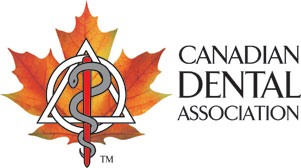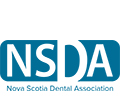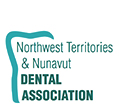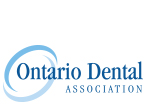As part of CDA's centennial celebrations in 2002, CDA and the Dentistry Canada Fund (DCF) presented an 11-part series of articles on the history of dentistry.
Dr. Ralph Crawford, dental historian and past president of CDA, authored the series titled, A Century of Service, tracing the dynamic growth and evolution of modern dental practice in Canada over the past 100 years.
These articles were originally featured on CDA's 100th Anniversary website and were also printed in all 2002 editions of the JCDA (Journal of the Canadian Dental Association).
The series is now available on this website. To view the articles from A Century of Service, click on the links below. A synopsis of the series is provided below the list of articles.
Governor General's Message | Prime Minister's Message | CDA President's Message
Annual CDA Meetings 1902-2002 | Honourary CDA Members
Part 1 | Part 2 | Part 3 | Part 4 | Part 5 | Part 6
Part 7 | Part 8 | Part 9 | Part 10 | Part 11
A Synopsis of A Century of Service
The Canadian Dental Association: 1902-2002
As Canada grew into nationhood from Confederation in 1867 to the present day, change has been a constant in all fields, including dentistry. In the waning days of the 19th century and the early days of the 20th, dentists concerned with the public’s welfare were mindful of the need to regulate the practice of dentistry. Lacking proper regulations to protect the public, anyone with a box of dental instruments could claim to be a dentist. The unsuspecting patient had no way to determine good dentistry from bad – the qualified from the quack.
In response to the need for regulation, a group of dedicated dentists led by Dr. Barnabas Day founded the Ontario Dental Association on July 2, 1867. By March 1868, the ODA succeeded in having an Act Respecting Dentistry passed in the Ontario Legislature, where full powers of licensing and regulating were placed in the hands of the Royal College of Dental Surgeons of Ontario. This was the first Act of its type in the world; it became a model for similar legislation across Canada.
In 1889, Dr. George Beers, editor of the Dominion Dental Journal, pointed out the weaknesses of individual provincial policies and the need for a national organization. In 1893, Dr. Frank Woodbury, secretary of the Nova Scotia Dental Association, initiated a movement for reciprocity between the provincial boards. As a result of such efforts, enthusiasm for a national organization grew over the next decade.
CDA’s Founding Meeting in Montreal – September 16-18, 1902
CDA’s New Governance Structure – November 16, 2001
International Relations
CDA and Dental Public Health
Prepaid Dental Plans and Benefits
Canadian Dental Service Plans Inc. (CDSPI)
Taxation/Federal Government Relations
Conclusion
CDA’s Founding Meeting in Montreal – September 16-18, 1902
Considering how difficult it must have been to plan a conference in those days, the first national dental meeting in Canada was a marvel of organization – reflected in high attendance figures. Much of the credit for the meeting’s success was due to the tireless efforts of Dr. Eudore Dubeau of Quebec, who wrote to every dentist in Canada, rallying support for a national organization.
Some 350 dentists – more than 20% of all the dentists in the country at that time – came to Montreal by train for the three-day meeting. As each dentist registered, he was handed a copy of a proposed constitution, complete with by-laws and a code of ethics for the new association. These were adopted unanimously on the first day of the meeting. It is to the great credit of the pioneering CDA fathers that so much was accomplished in only three days.
CDA’s New Governance Structure – November 16, 2001
Throughout CDA’s 100-year history, landmark decisions have been made on a myriad of issues affecting the dental profession and the oral health of Canadians. One such decision occurred on November 16, 2001, on the eve of CDA’s centenary. The Board of Governors – CDA’s ruling body – decided to completely revamp the association’s governing structure and framework. Adopting a structure that allows for a General Assembly – incorporating the many groups that make up organized dentistry in Canada today and a ruling Board of Directors – CDA is confident that this new structure will set the stage for continued achievements in the century ahead.
International Relations
CDA's focus on international relations continued to gain strength in recent years. CDA became a significant player on the world stage in such forums as the International Organization for Standardization (ISO) and the World Dental Federation (FDI). In 2001, the association’s president was elected to an executive position on the FDI Council. The growing recognition of CDA in the global arena sets the stage for even more significant international recognition and contributions in the years ahead.
CDA and Dental Public Health
Dental public health has been a CDA priority throughout its history. At the association’s third meeting, held in Montreal in 1906, CDA listed its public health objectives — all have a familiar ring 100 years later.
- An Act requiring the periodic examination of the teeth of schoolchildren and providing for the appointment of dentists for that purpose;
- Revision of schoolbooks with regard to hygiene of the mouth and the teeth;
- Distribution of suitable booklets in public and private schools and at large military camps;
- A special paper on the subject of dental hygiene in the examination for teachers’ licenses;
- Special instructions on dental hygiene in normal schools;
- Lectures before teacher's associations and schoolchildren in public and private schools.
In October 1953, with the Brantford fluoride studies in hand, CDA recommended that communities across Canada adopt a procedure for water fluoridation best suited to their local needs, after obtaining competent dental, medical and engineering advice.
In 1985, CDA launched the National Dental Awareness Program (DAP) with the slogan Dental Health, Good for Life. Within a year, the DAP program raised almost one million dollars in media/publicity sponsorship.
Over the years, CDA has been active in conveying a variety of oral health care messages to the public through vehicles such as newspaper supplements, patient brochures, placards and other in-office materials. In 2001, CDA launched an extensive dental awareness campaign on tobacco use and its impact on oral health. Recognition of the association’s efforts in this area resulted in a CDA official being appointed to the Federal Minister of Health’s Advisory Council on Tobacco Control.
Prepaid Dental Plans and Benefits
Few innovations in dentistry have had a greater influence than prepaid dental plans. In 1950, CDA’s secretary-treasurer Dr. Donald Gullett editorialized in the JCDA (Journal of the Canadian Dental Association) that: “Up to the present, dentistry has made little effort toward establishing voluntary plans.” At CDA’s 1963 annual meeting, Dr. W.G. McIntosh, past president and chairman of the Dental Services Committee, said: “There are now 150 prepaid dental programs in North America, serving 200,000 Canadian and two million U.S. citizens.” McIntosh warned delegates not to resist this rapid social change: “If we fail to make our services available or place them beyond the public’s reach, our status as a profession and our legal power of self-regulation will quickly disappear.”
Over the years, CDA has played an active role consulting with employer groups, plan providers and insurers on dental benefit packages and plans for Canadians. First and foremost, CDA has always advocated no third-party intrusion between the dentist and patient in the delivery of care, thus successfully countering any significant growth of managed-care dental plans in Canada. In 1991, CDA and its provincial corporate members introduced CDAnet, an electronic claims transmission service to expedite insurance claims and predeterminations from the patient to the insurer. By the end of 2001, over 12,000 dentists were on CDAnet as plans to improve the service continue.
Canadian Dental Service Plans Inc. (CDSPI)
On January 1, 1959, Canadian Dental Service Plans Inc. was born. A federally incorporated body developed and owned by the Canadian Dental Association and the provincial dental associations, CDSPI’s initial mandate was to collect insurance premiums and administer plans for dental care services in Ontario. From that time, it has grown into a truly national service organization that designs and provides a wide array of insurance and investment plans to aid dentists throughout their careers. Founded and owned by dentists for the benefit of dentists, CDSPI is an organization that has pioneered and made a historical mark in the provision of an ever-expanding program of service to the Canadian dental profession.
Taxation/Federal Government Relations
Possibly no area is watched more closely by dentists than taxation and federal government relations. One of the earliest CDA success stories was in 1920, when the federal government considered the dentist a "manufacturer" and imposed an onerous 2% sales tax on dental treatment. The important issue was not so much the 2% tax, but whether the dentist was a practising health professional or a manufacturer. After considerable effort, CDA was able to have the tax rescinded. A principle was protected and a precedent established.
In a 1939 special tariff case, CDA succeeded in having a proposed 32.5% duty charged on certain dental goods dropped. The 1939 scenario with the federal government was to be played out repeatedly in the ensuing years. Here are some of the notable success stories following CDA presentations to government:
- 1955: dental chairs, units, declared free of duty
- 1956: tax deduction on convention expense
- 1957: tax postponement on pension plans
- 1962: CDA submits brief to the Royal Commission on Health Services
- 1979: incorporation of management companies
- 1981: free duty on certain dental materials
- 1982: opposed taxation of employer-paid dental premiums
- 1983: CDA brief on pension reform
- 1988: a successful campaign against GST on dental services
- 1995: Enough is Enough campaign scuttles taxation on dental benefits
- 1998: CDA successfully advocated to extend the tax exemption on health and dental plans for the unincorporated self employed.
- 2001: CDA submits brief to the Romanow Commission on the future of Health Care In Canada
Conclusion
The good news is that the demand for high-quality dentistry has never been greater. The baby boom generation (born between 1947 and 1966) is the wealthiest in Canadian history and has a high regard for health and beauty -- including cosmetic dentistry. The dental profession in the past century has had an earning power well above the Canadian average, and all indications are that this trendline will continue well into the future. People place great trust in their dentists and consider them the most knowledgeable experts on the subject of oral health.
When CDA’s founding fathers met in Montreal in 1902, they set the course for a national dental organization that was to have a profound effect on the profession and on the dental health care of Canadians for the next 100 years.











